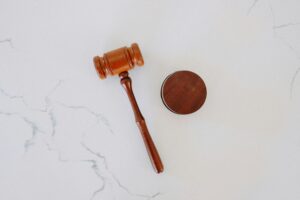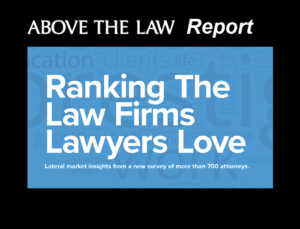Gentle Reminder: You Are A Human Being
How do we learn to coexist and create a harmonious relationship with technology? How do we use technology for the good and not allow it to become a disease that harms us?
I bumped into a friend on the streets of San Francisco last week. I stopped, delighted to see her, and asked, “How are you?” I haven’t seen her in over a year. “Ugh. I am so busy,” she replied. And she seemed very busy. I nodded and she said, “I have to run,” then ran off.
As I walked back to the office, I reflected on how much busier life feels today than it did five or 10 years ago. Despite technology promising to make everything more efficient, more streamlined, and faster, creating more free time, I feel as though it has had just the opposite effect. Life feels more hurried and there’s less time for everything.
I installed an app, Moment, on my iPhone. It tracks how many hours I spend on it. I usually spend anywhere from 1.5 – 7+ hours on the iPhone on a daily basis. I suspect on those days where I’m “only” spending 1.5 hours, I’m spending more time on my MacBook. And I can’t help but wonder what the impact of all this screentime is having.

Curbing Client And Talent Loss With Productivity Tech
Moore’s law predicted that processing speed in microchips will double every two years. Which means we’re able to do more in less time but have you paused to ask: What is it that you’re exactly doing and why?
Is a purpose of a human being to bill as many hours as humanly possible, to “maximize” every minute of every day, or to earn as much money as possible? Ever look at your ever growing, ever exhausting list of to-dos and critically examine it? If I asked you to make a list of the Top 10 things that are most important to you, how would your to-do list map?
There are days where I feel like all I do is manage my Inbox. It feels as useless and just as hopeless as standing at the edge of the ocean, trying to push back the waves.
As human beings, we want to have a meaningful life, surrounded by people we love, doing meaningful work, and for balance. Yet, we have drifted so far from this primary desire and have become human doing instead.
Sponsored

Law Firm Business Development Is More Than Relationship Building

Curbing Client And Talent Loss With Productivity Tech

Thomson Reuters' Claims Explorer: A Powerful Tool For Legal Claim Identification


Luxury, Lies, And A $10 Million Embezzlement
I recently read that in many Muslim cultures, when you want to ask a person how they’re doing, you ask in Arabic, Kayf haal-ik? or, in Persian, Haal-e shomaa chetoreh? How is your haal?
Haal as the author explains is:
…the transient state of one’s heart. In reality, we ask, “How is your heart doing at this very moment, at this breath?”
When I bumped into my friend on the street, in that very brief moment of connection, when I asked her “how are you doing,” what I wanted was to share a moment of genuine connection with her. I wanted to hug her just a second longer, to hold eye contact for another moment, to linger and smile.
Instead of more busyness, what I crave is more moments of ease — a sense of not feeling hurried, a sense of spaciousness, and a generosity of time. This is different from relaxation.
Sponsored

Ranking The Law Firms Lawyers Love

Luxury, Lies, And A $10 Million Embezzlement
From Insight Meditation Center:
Relaxation has more to do with the lessening of tension and stress; it is felt in contrast to tension. Ease has more to do with an inner peace and harmony that exists without any reference to tension; it is felt more as something that exists in-and-of-itself. Relaxation is a relief, ease is a state of being.
On Tuesday, I had lunch with my friend, Terry. It was a rare occasion where we set aside our smartphones and he shared the state of his heart and I shared mine. Our lunch felt easeful and I couldn’t imagine any other way to spend the afternoon. As we left the restaurant, I realized we spent almost two hours, chatting, and practicing being.
As I was driving back to the office after lunch, I noticed how full my soul felt after sharing this very human moment and how rare it is.
I believe this is the next challenge in human evolution: How do we learn to coexist and create a harmonious relationship with technology? How do we use technology for the good and not allow it to become a disease that harms us?
I suspect each of us will struggle and will need to come up with solutions. Yet, one thing feels certain: if we lose our ability to connect with our own heart and hearts of others, we’ll lose the meaning of being a human being.
The next time someone asks “how are you doing?” I invite you to check in with your heart and see how your heart is doing — in that moment. Not that you have to share it, but at least you can be honest with yourself.
As always, you can drop me an email at [email protected] or connect on Twitter @jeena_cho.
Jeena Cho is a mindfulness instructor, author, and lawyer. Through her programs and coaching, she helps high-achieving lawyers use mindfulness to train the brain for peak performance, reduce stress, and create a sustainable law practice. Jeena has worked with clients from Sheppard Mullin, Sidley Austin, Canadian Bar Association, NACBA, AABA, NAPO, NYWBA, and BALRA (and many other acronyms) to name a few. She’s the co-author of the ABA book, The Anxious Lawyer: An 8-Week Guide to a Happier, Saner Law Practice Using Meditation (affiliate link). To learn more visit www.theanxiouslawyer.com or connect with her on Twitter at @jeena_cho.







